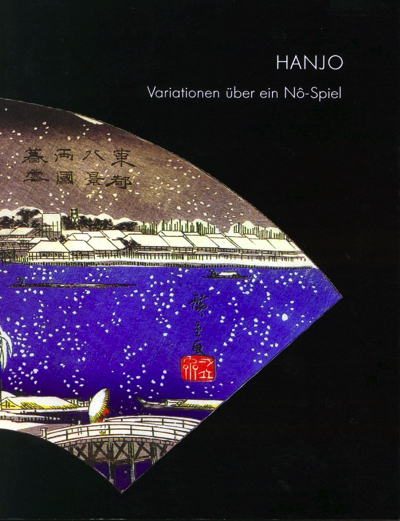My next work with Yoshi was « Han-jô » one year later, still for the Schaubühne am Lehniner Platz in Berlin. Also written by YukioMishima, « Han-jô » is the last of the five « modern Nô » that Mishima published in 1956.
This Nô (about Nô Theatre) is inspired from a more ancient Nô which tells the story of two lovers who exchanged their fans as a future promise of marriage. The Mishima´s version is harder. The geisha who was waiting for her lover, did become slowly mentally disturb and go everyday to the railway station in the hope to finally see him among the travellers. This remembers also the legend of Hachiko who spent the rest of his life waiting for his deceased master at Shibuya, a railway station in Tokyo. Hachiko which really did exist became so much admiration from the population, that there is a statue of this faithful dog just out of the station. Of course, this statue became a very famous meeting point for people in Tokyo.
The evening was also completed with a Kyogen. Yoshi chose to propose an evening in the same structure that the Japanese tradition used to.
The terms Noh and nōgaku are sometimes used interchangeably, nōgaku encompasses both Noh and kyōgen. Traditionally, a full nōgaku program includes five Noh plays with comedic kyōgen plays in between; an abbreviated program of two Noh plays with one kyōgen piece has become common today (Wikipedia, about Nô theatre).
A « kyōgen » is similar to what we could call in Europe a « little boulevard play », and it was use to propose such a light play in between the classical Nô performance to relax the atmosphere. A classic Nô theatre evening (about Nô Theatre) was in its normal duration, very long.
|

